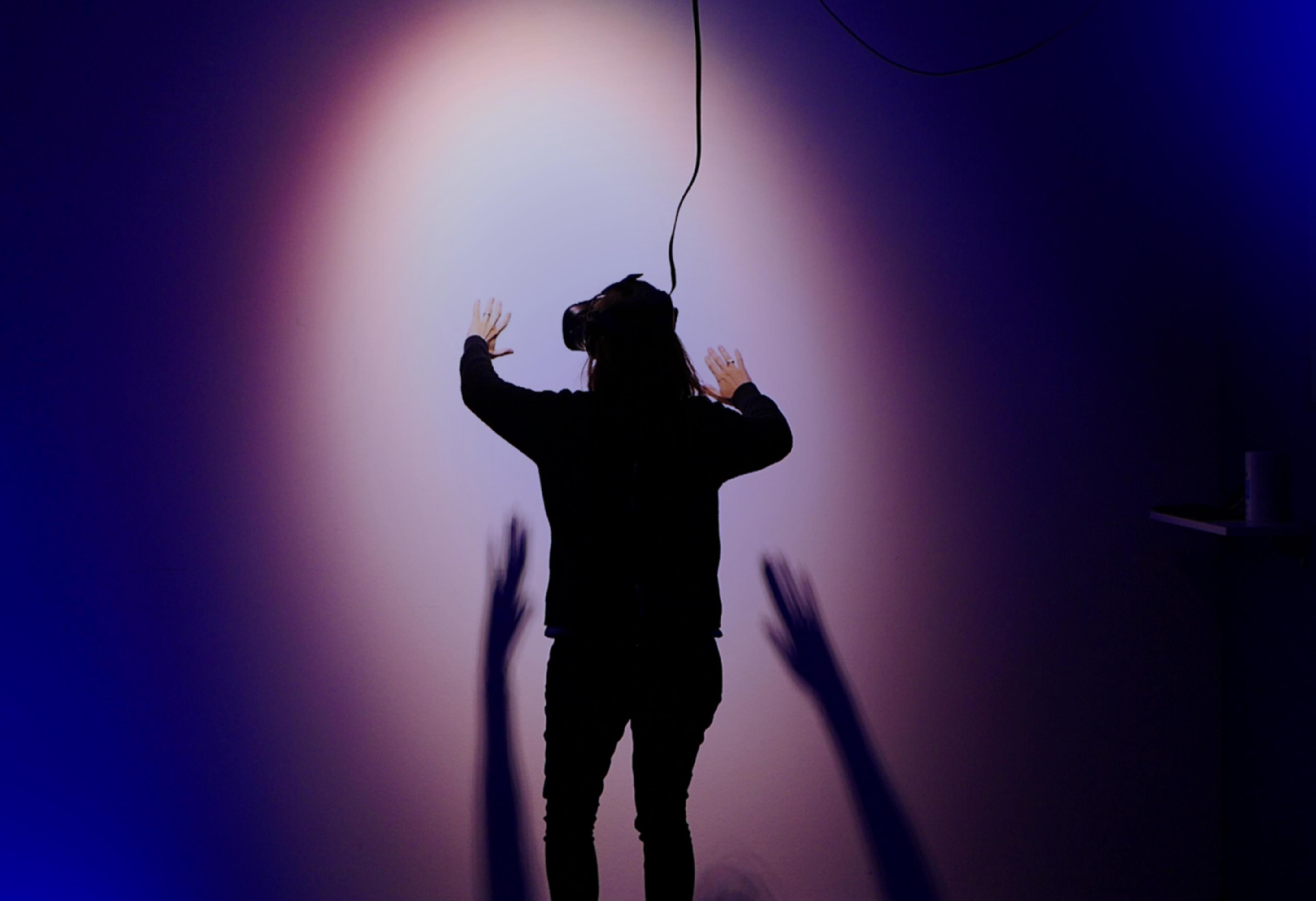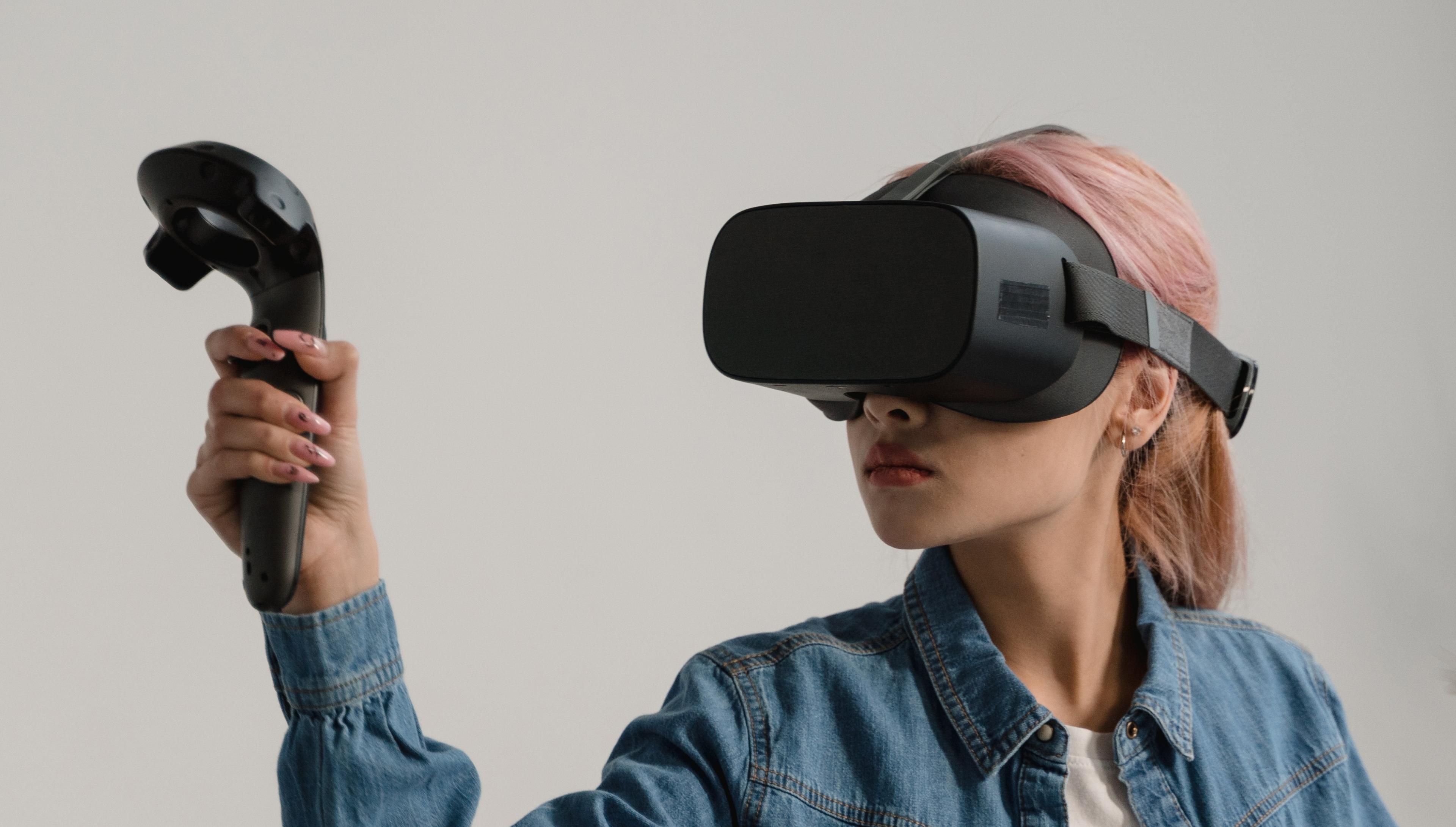
Virtual reality in gaming

The gaming landscape is headed for a seismic shift. With the introduction of platforms like HTC Vive, Oculus Rift and PlayStation VR, virtual reality has marched into the mainstream, bringing major changes to the gaming industry right along with it.
What does this mean for game development?
How is virtual reality changing the way games are made?
What challenges does VR pose for developers?
Those macro questions are increasingly coming to the fore, which is exciting news given how quickly the gaming landscape evolves and that virtual reality has thus far been a bit of a dark horse in the sector. For decades, the promise of VR has been alluring but elusive.
Now that the technology has hit a critical maturation, the change it’s bringing — from the development process to the skills and resources required — will likewise be long-lasting. And while it wouldn’t be fair not to acknowledge the range of applications for VR development beyond gaming (consider treatment for migraines and surgical training), the supermajority of VR innovation and investment is happening in the gaming space.
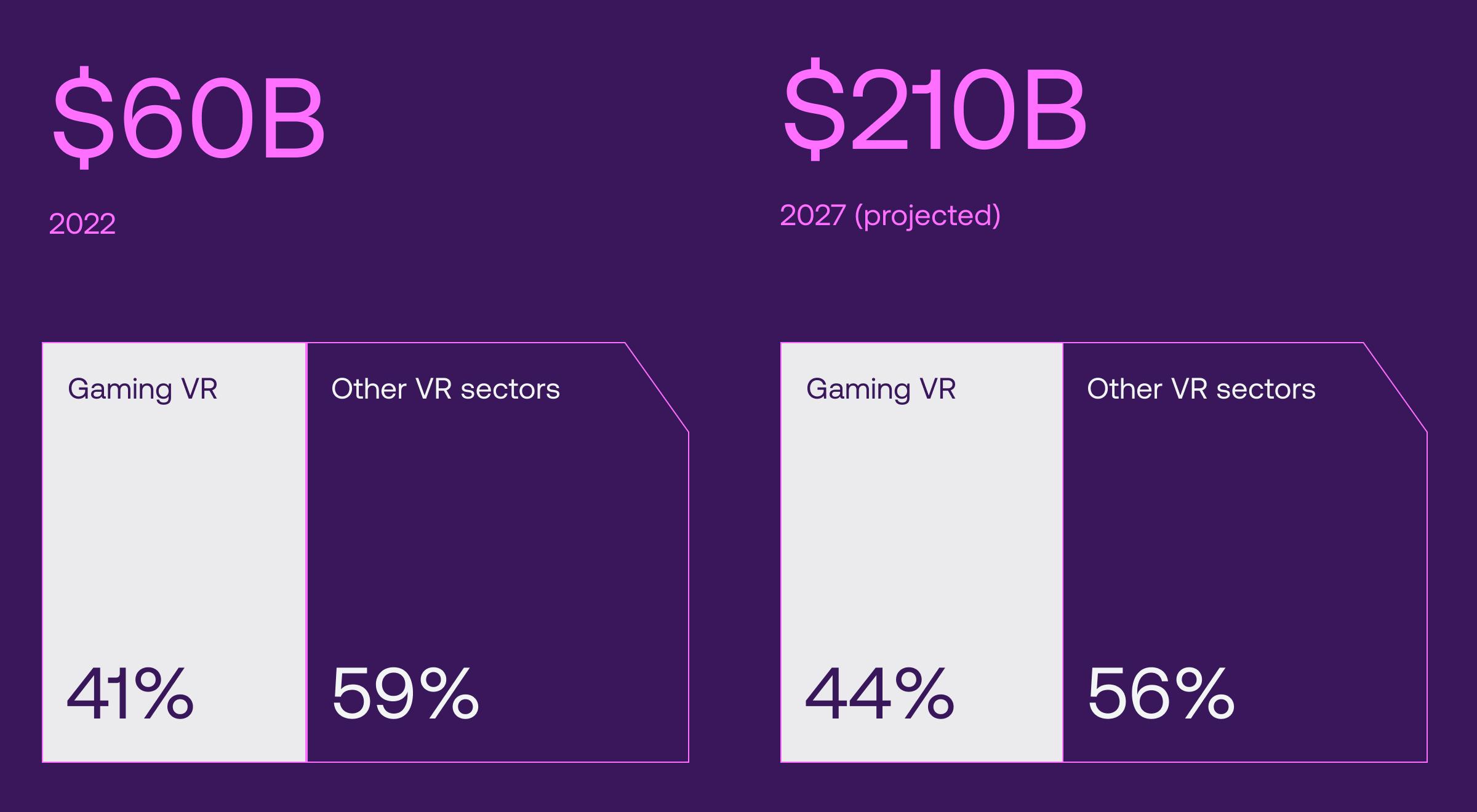
Source: Grand View Research (Total VR market, Gaming VR Market)
The value of gaming VR is expected to reach $92.3 billion in 2027, 3.7x times higher than in 2022.
Despite already commanding a huge share (41%) of the VR pie, with $24.7 billion in 2022, gaming is poised to grow its VR foothold to 44% in the next few years.
How VR is transforming the gaming industry
Remember the tipping point that led to that radical acceleration of the video game industry? Back in 2020? Yep, you’ve got it: The sluggish virtual reality gaming market transformed from a fledgling experiment to a literal game-changer with the release of Half-Life: Alyx, a first-person shooter (FPS) in which the titular character (Alyx) fights for survival against a hostile alien collective. Players got to use all the physics-defying mechanics the Half-Life franchise was already known for, this time at their literal fingertips.
The legendary studio Valve pulled the release off masterfully. It already had millions of proudly self-described fanatics who waited day and night for the next installment of Alyx, plus a new offering: a proprietary VR headset to play the game on. With Alyx released exclusively to virtual reality platforms, the franchise’s legions of fans were faced with the choice of missing out on getting the headset or missing out on Valve’s thundering new release.
The game still gets glowing new reviews nearly three years after its release and continues to garner acclaim worldwide. The entire VR world has benefited from a massive influx of new headset-clad customers, cementing Alyx’s role as the patron saint of VR.
And you can actually see how just pivotal the Alyx moment was when you look at the numbers for VR in gaming, by year: According to a report by Grand View Research, in 2020, the VR gaming market size was $14.55B, and it had grown only incrementally in the preceding years. The revenue forecast for 2027, just five years away? That stands at a whopping $92.31B.
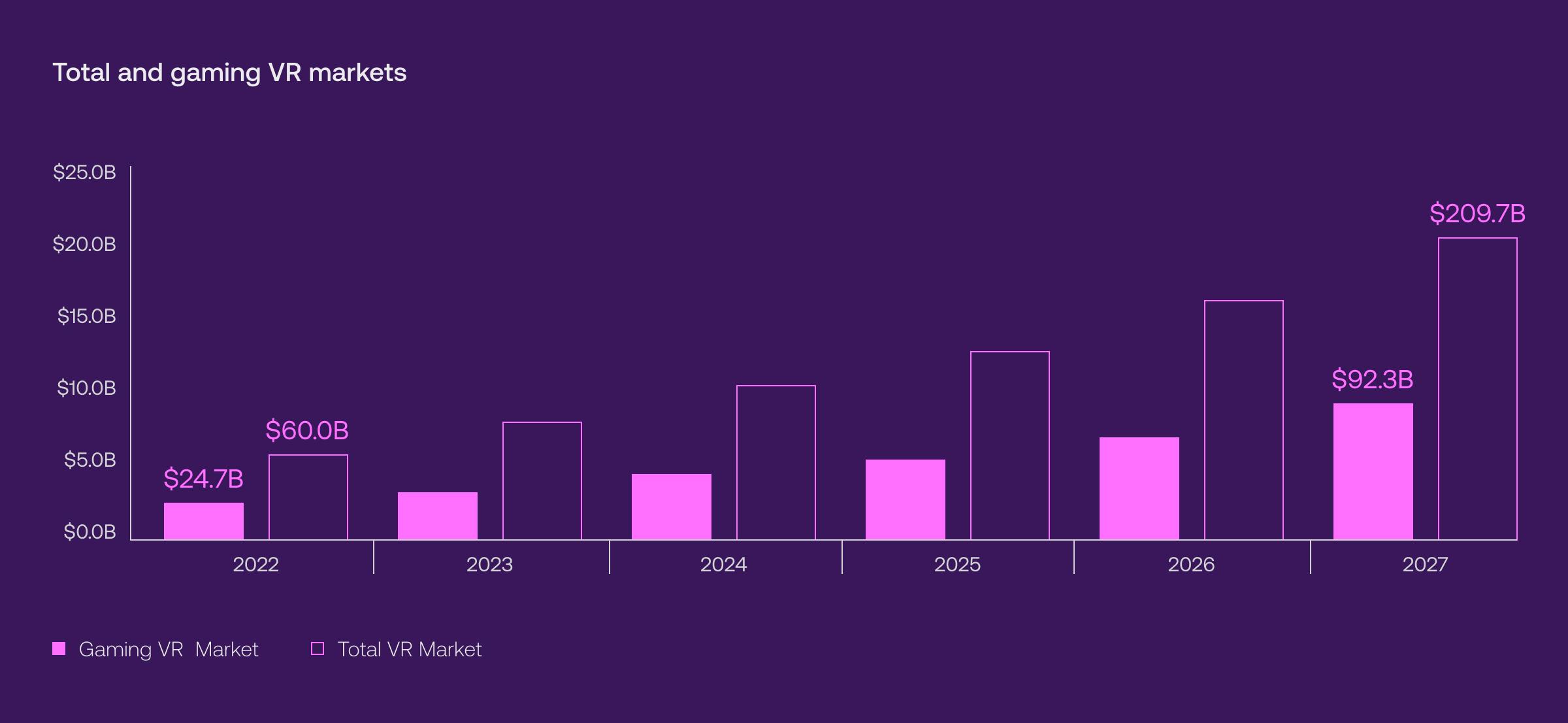
Source: Grand View Research (Total VR market, Gaming VR Market)
VR’s growth isn’t limited to games. The entire market is on the rise.
Gaming VR is projected to grow 3.7x between 2022 and 2027, in tandem with the total VR market growth of 3.5x in the same period.
Apple VR
If there was any question as to whether VR has seen the end of big-name entrants with deep pockets and an eye towards industry dominance, Apple has provided a resounding answer. As the tech giant moves closer to the much-anticipated release of its proprietary VR and AR products, potential customers and news outlets alike continue to clamor for even a shred of information, be it the specs on Apple’s VR headset or rumored prices for Apple VR products.
More than just consumer hype, Apple’s entrance into the industry signals a profitability that gives added credence to the industry’s prospects and staying power.
The benefits of VR in gaming
VR offers a new way to experience gaming. With virtual reality, users are empowered to immerse themselves in worlds and stories that were previously impossible to experience. VR enhances the gaming experience, including increased realism, enhanced interactivity, and improved social interaction. VR technology can also improve the sense of presence, allowing gamers to feel as if they are actually in the game. With the power of VR, gamers can experience a heightened level of engagement and emotion that was not previously possible with traditional gaming platforms.
Experiences unique to VR
For players and developers alike, VR devices add a very literal new dimension to experiencing games. That doesn’t just mean creating entirely new experiences, it also means innovating established ones.
Take for example the wildly popular FPS genre; games like Onward offer a night-and-day difference between angling a joystick to move versus the immersive experience of physically leaning to peer around a corner. Or the chrono-kinetic VR staple Super Hot, in which time itself moves only when and at the speed that the player does, offering puzzles and situations that would be unthinkable outside of virtual reality.
Health benefits
Is it not every kid’s dream to have a legitimate point when they insist to their parents that “video games are GOOD for me!”? VR games have provided kids everywhere with the data-backed response they’ve been dreaming of.
In a number of different medical studies studying the health effects of virtual reality, testing found that VR can play a beneficial role in functions varying from weight loss and muscle retention to mental health and even physical training.
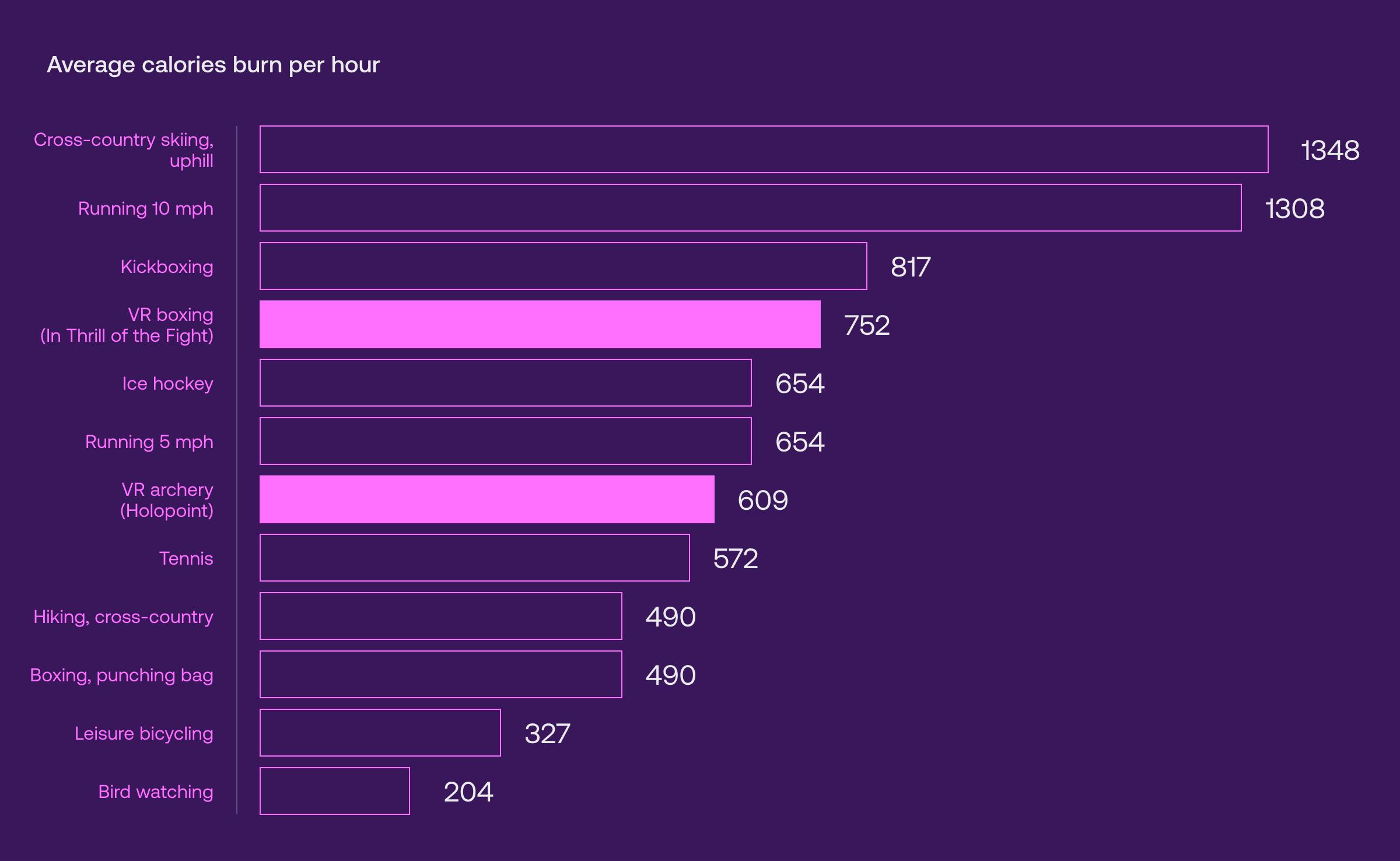
Source: Everyday Health
It’s not always child’s play: Some VR games demand a respectable amount of physical effort and reward the player’s health.
One hour of VR archery burns more calories than the same period playing tennis (609 vs. 572). And VR boxing is surprisingly close to real kickboxing (752, without kicks, vs. 817).
Education
In the past, educational organizations like the USS Arizona Memorial used immersive simulations of the opening moments of the Pearl Harbor attack to share history in a uniquely powerful way. In recent years, the interactive qualities of VR gaming have been integrated with educational materials to foster learning through 3D immersive experiences.
Because VR creates unique learning environments, it can take learners on excursions that would be impossible in person, like exploring the International Space Station, a project made in direct collaboration with NASA. And students can build skills with programs like Virtuoso, a game designed around providing foundational music theory and instrumental skills by leveraging VR’s unique simulative interface. The game empowers players to engage with the curriculum by simulating instruments that users can play to refine and display the knowledge they acquire by playing the game.

VR games and the metaverse
As a shared, persistent virtual world for exploring content, the metaverse is a natural fit for gaming; in that context, “persistent” means the world of the game continues whether you’re currently playing it or not, and the assets you accrue in the virtual world don’t disappear once you’ve logged off.
If you’re thinking this sounds like an MMORPG, a structure that’s existed for decades in computer gaming, you’re absolutely right. The metaverse, is in many ways, the application of MMO structure to a virtual world designed for both gaming and non-gaming (e.g., social media and ecommerce) functions. While in World of Warcraft there’s an in-game economy for buying and selling in-game items like a magic sword or a sweet new ride, in the metaverse you might be buying digital assets — like clothes for your avatar, for instance — or just as likely perusing a digital storefront in VR to buy real-world items.
The potential uses for the metaverse development are too numerous to list and ideas for new theoretical functions are thought up every day across industries looking to capitalize on the new frontier. But to make the metaverse a reality, VR technology is a fundamental necessity. Game developers have been creating virtual worlds for decades, the newest branch of which is VR game design. That experience and continued innovation are an incredibly valuable resource to companies looking to create metaverses of their own.
The hardware of VR
Then there’s the hardware landscape of VR. Still very much a wild west as far as design doctrines, the technical constraints of different brands’ headsets have a larger gap than consoles. With PC or console game dev, you have a fairly uniform set of technical specifications that your game needs to fall within. But with VR games? Buckle up.
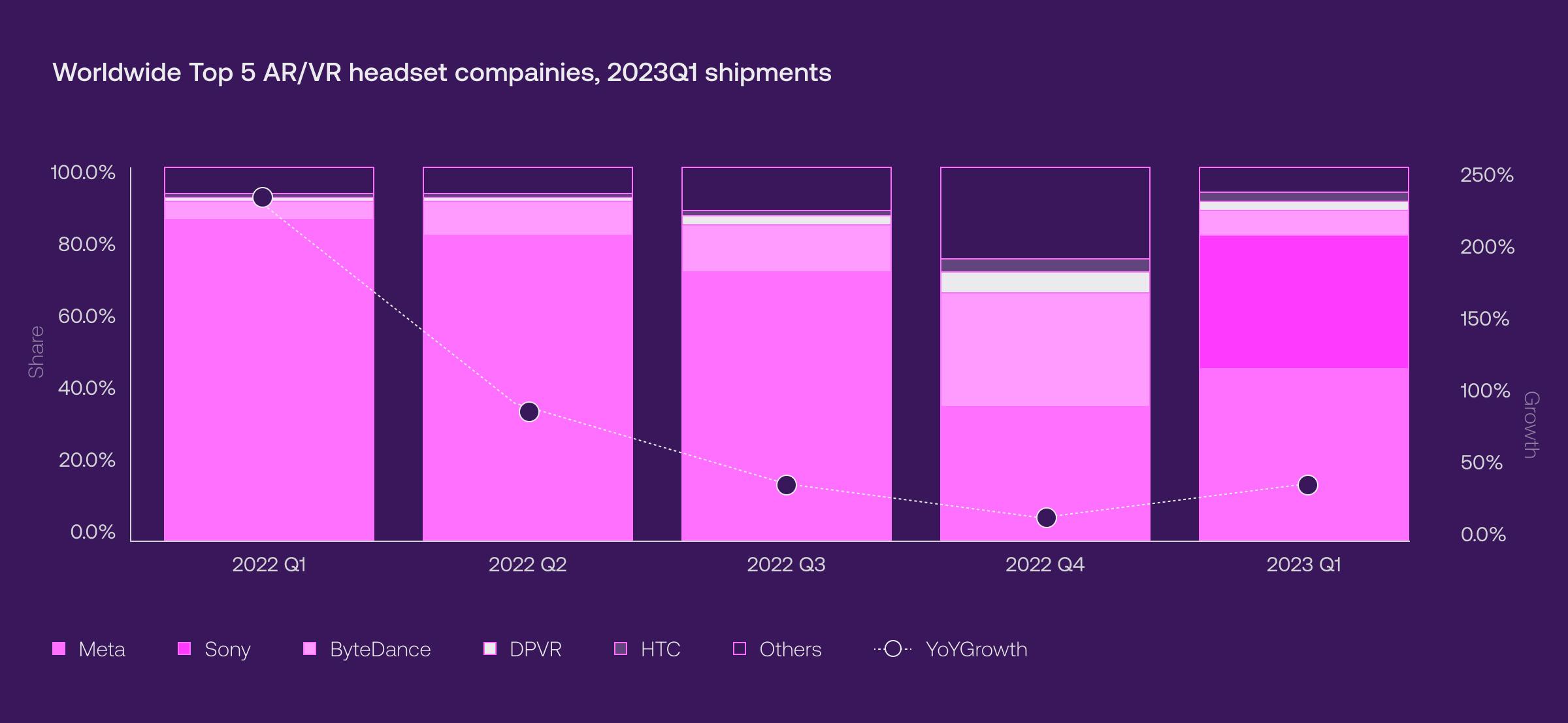
Source: IDC (original article, graph with dataset)
Twists and turns happen at a breakneck pace in the AR/VR market.
Meta’s near-hegemony of roughly 90% shipment share at the beginning of 2022 was successfully challenged by Sony, whose PSVR 2 headset, catered to PlayStation 5 owners, managed to capture almost 36% after its release in the first quarter of 2023.
Traditional game development is linear, with each stage building off the last, but virtual reality games introduce new challenges, namely how any new mechanic interacts with the game environment, but also the person playing it. This makes developing for VR more iterative.
The more 3D assets you add, or, more broadly, even just the more game complexities you add, the closer you get to edging out one brand of hardware or another. Consider headset sensors, the hardware the entire device relies on to track a user’s movements and keep them accurately positioned in the virtual environment. Some headsets use gyroscopes and accelerometers to track movement, others might use a gyroscope and internal cameras. Another still might use external cameras. These components determine the way that headset will run your game, which means deciding which platforms you’ll develop your product for and designing accordingly.
In addition to technical challenges, there are game design considerations specific to VR. The vast majority of gaming has thus far centered around one screen through which the world is shown — so devs only have to create what fits into that single, unmoving, viewable screen. VR takes that concept, crumples it up into a ball, and throws it away.
Enter Field-of-View (FoV). While 3D assets have existed in 2D games for ages, they’ve always been consigned to an unmoving screen. In contrast, VR games require assets existing around that eternal nuisance the player, who can turn their head and with it completely shift the FoV in a direction that didn’t have to be accounted for with 2D gaming. And just to keep things interesting? Different headsets have different widths of FoV varying as dramatically as 89° (Meta Quest 2, formerly known as the Meta Quest 2) to 120°(VIVE Focus 3).
That added complexity doesn't just up the experience: It also raises the bar with respect to engineering talent needs. Developers with VR experience are an important part of the equation, and finding devs up to the task of virtual reality development can be substantially easier when using external talent firms.
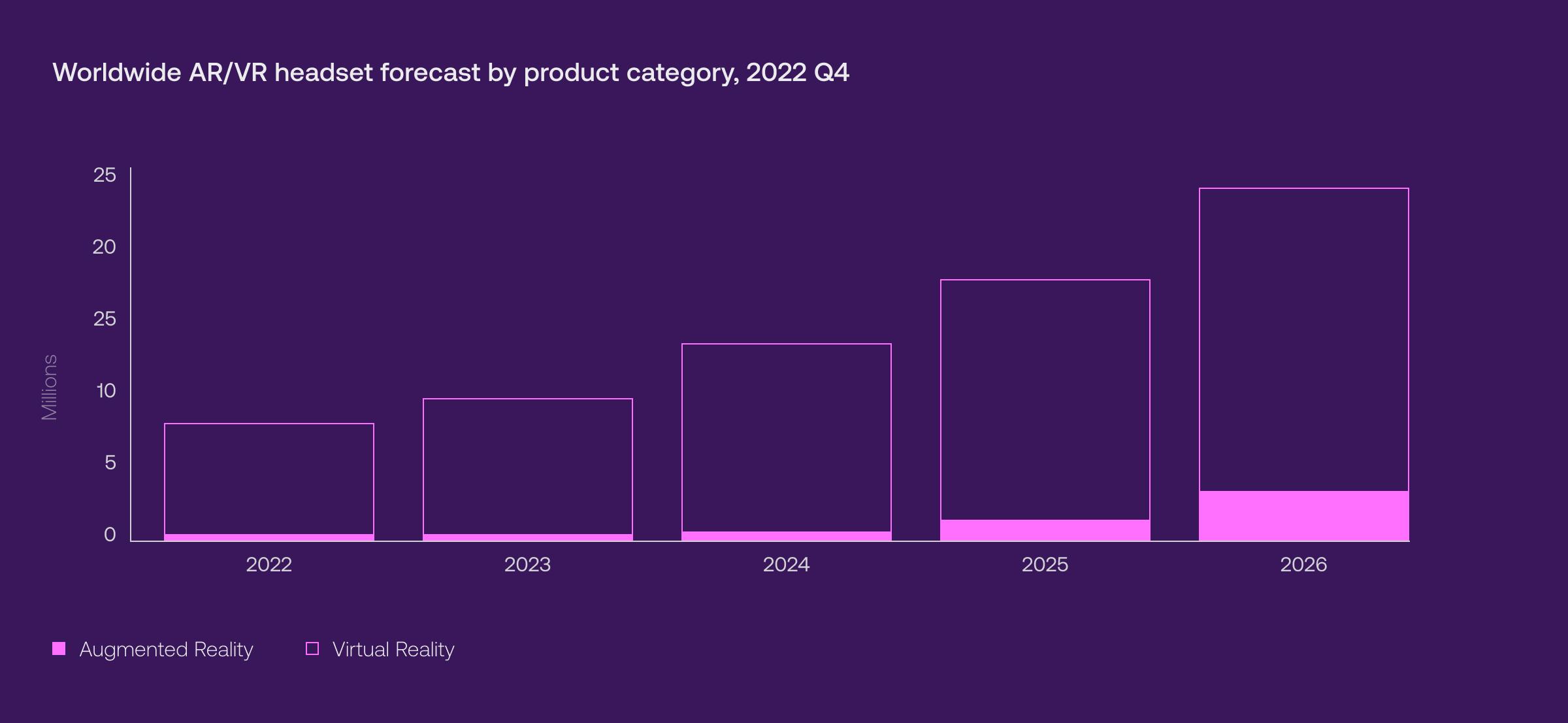
Source: IDC
With 10 million headsets shipped in 2023, it’s as if the entire population of Michigan or Portugal suddenly became proud AR/VR headset owners.
In comparison, estimates for 2026 predict a 2.5x increase in yearly shipments, to 25 million.
Developing for this medium can be daunting, but if you’re as excited at the prospect of creating in what might well be gaming’s final frontier, the challenge fuels the fire. And if you’re looking for some extra developers who share that sense of drive and enthusiasm in tackling VR’s challenges, we might know where you can start.



